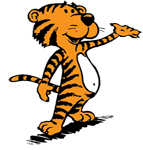4th Grade Newsletter
December 15, 2020
Language Arts
What are we learning?
- Readers take time to understand and give thought to determine an author’s perspective in order to understand their bias.
- They develop their own opinions about the topic based upon what they are reading and their own background.
- As they read, they consider titles and headings that will give clues to the author’s purpose and message.
- They think through their topic and decide how best to present their ideas.
- Writers organize their thoughts before they start writing.
- They take notes to gain knowledge so they can best present their ideas
Home/School Connection
- Has the author used any opinion words to support their ideas?
- Think about the facts in the test and say, “I think the author believes that , because…”
- Then state what you think about the topic. Say, “However, I think that , because…”
- What topic do I want to write about?
- What are the parts of my piece that will support my “big idea?”
- “What could each of the parts of my piece be called or which heading will I use?”
Math
What are we learning?
- Students will learn about inverse (opposite) relationships with multiplication and division (fact families)
- They will examine commutative and associative relationships; where the order of the digits don’t change the answer when adding and multi[plying.
- We are learning to compare and contrast 2D and 3 D shapes while supporting our answers using information learned in class (sides, angles, vertices, faces) *
- Students will understand the difference between perpendicular and parallel sides
- While exploring 2D shapes, students will understand the difference between parallelograms and quadrilaterals *
- *asynchronous on Mondays. FCPS provides a video and a lesson for students to complete independently
Home/School Connection
- Come up with four equations (two multiplication and two division) using three numbers. (example: 2,4,8 2x4=8, 4x2=8, 8/2=4, 8/4=2) This is a fact family.
- 3x2=6 and 2x3=6 what does this show?
- (3x2)x4=18 and 3x(2x4)=18
- Recycle!! Pull out your trash and have your student identify the shapes.*
- Use the recycling to create a “robot” . Be sure to ask about the shapes included and how they can be identified.*
- Take a walk around the neighborhood and identify parallel and perpendicular streets *.
- Identify shapes in the world around you. (fences, homes, mailboxes)*
-
*asynchronous on Mondays. FCPS provides a video and a lesson for students to complete independently
-
Science
What are we learning?
- Weather data is used to predict weather events including flooding, droughts, and destruction of habitats.
- Average weather data over at least 30 years determines a region’s climate.
- Some weather components that make up climate include average temperature, humidity, wind, and amount of precipitation.
- Components used to describe weather are: temperature, atmospheric pressure, wind speed, precipitation, and cloudiness.
Home/School Connection
- What would measure the rain? The wind?, The humidity?, The temperature?
- Who uses these tools?
- What is the climate of Virginia/
- What precipitation could we expect this month? Next month? In the summer?
- What kind of profession explains the weather and analyzes the data?
- Where can we hear them? Why do we need to know
Social Studies
What are we learning?
We will continue our Colonial Virginia Unit!
Throughout this unit we will...
- We will analyze the role of slavery in the growth of the colonial economy and the development in the United States
- We will uncover the dynamic, resilient, adaptive, and diverse nature of American Indian Cultures, African cultures, and European cultures
- We will evaluate the choice to relocate Virginia’s capital from Jamestown to Williamsburg
- We will explore the choices people can make when creating a system of exchange good and services
- We will form relevant questions about the lives of Africans, Native peoples, and Europeans in colonial Virginia
- How do the history and cultures of colonial Virginia influence the lives of Virginians today?
- How do people’s values shape the design of their economies?
- Why do some people leave their homes, and how do they impact their new homes?
- What influences how I act, think, celebrate, and make rules?
- What are the characteristics of culture?
Home/School Connection
- How do the history and cultures of colonial Virginia influence the lives of Virginians today?
- How do people’s values shape the design of their economies?
- Why do some people leave their homes, and how do they impact their new homes?
- What influences how I act, think, celebrate, and make rules?
- What are the characteristics of culture?
Positivity Project
- Students show self-control by thinking before acting, thus controlling their emotions and behaviors.
- Talk about it! Ask your student to share strategies they can take before acting on their emotions. This dialogue helps us brainstorm ways to show self-control and help spread positivity!
Online Learning Tip
- Learners need movement throughout their day. By incorporating movement and activity throughout the day (including morning and afternoon), learners can be more engaged in instruction and less distracted.
- Building relationships with your child’s teacher can be so important for your child’s success. You are the expert on your child, by communicating your child’s successes, needs, challenges, and any questions, you and the educator can work together to create the best possible supports for your child.


